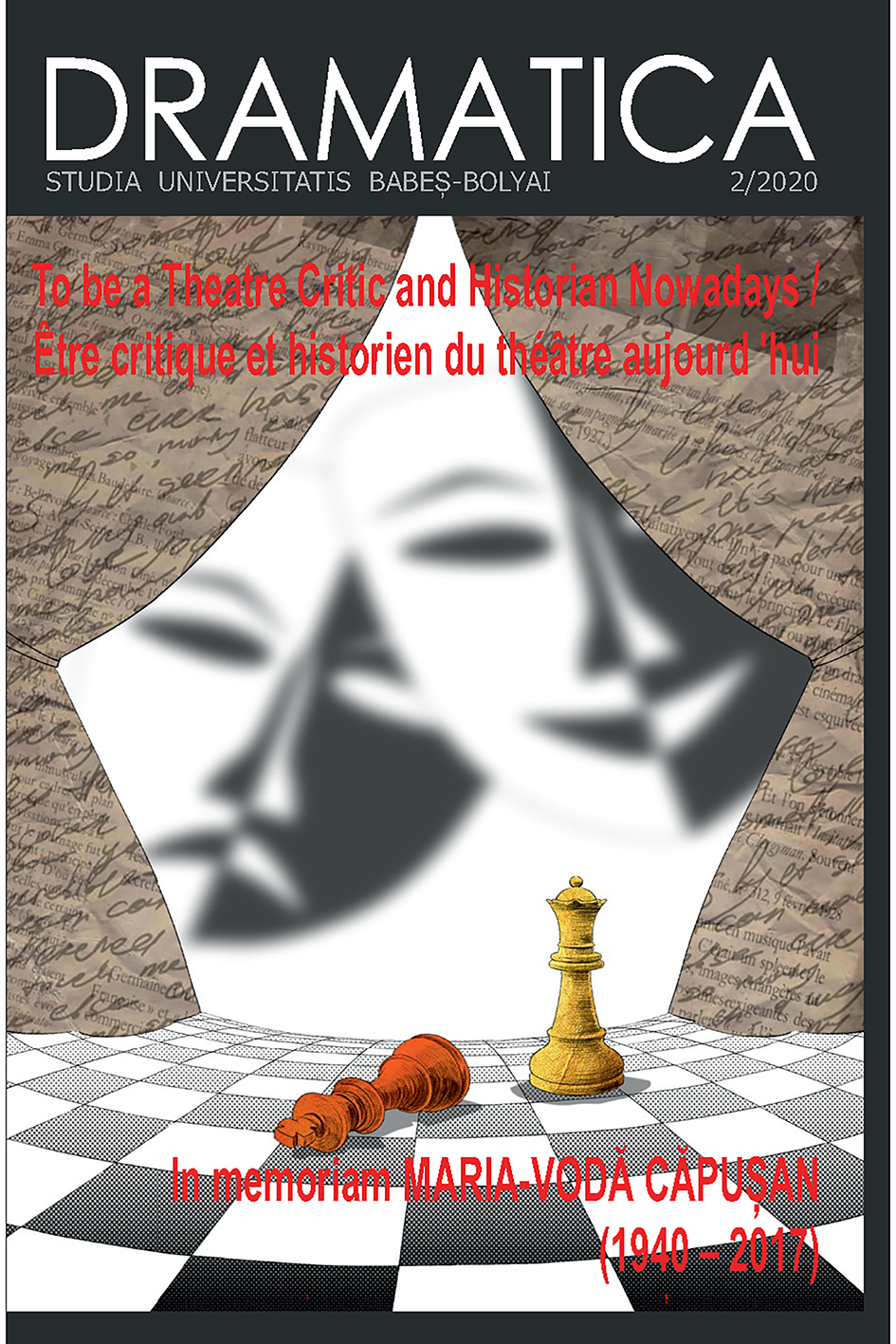Trois scènes de bal dans le roman français (« La Princesse de Clèves », « Madame Bovary », « Le Ravissement de Lol V Stein »)
DOI:
https://doi.org/10.24193/subbdrama.2020.2.11Keywords:
ball scenes, French Novel, dramatic mechanisms, narrative pretext, love stories.Abstract
Three Ball Scenes in the French Novel (“La Princesse de Clèves”, “Madame Bovary”, “Le Ravissement de Lol V Stein”). This article aims to analyze – in a comparative manner – three ball scenes from novels belonging to leading authors of French literature (Madame de Lafayette, Gustave Flaubert and Marguerite Duras), highlighting a series of dramatic mechanisms used by novelists in the construction of such a diegetic plot. If La Princesse de Clèves describes a ball that takes place in the royal court, with all the typical scenes of the time (embodied in a real mixture of intrigue and gallantry specific to the living environment of the actors, which make the topos of the novel itself become a collective character), Madame Bovary describes, instead, a ball animated by the high society of the nineteenth century, with all the specifics of the realistic episteme (the ball becomes here an opportunity to evoke the painful contrast between different living environments, which the heroine cannot access and which causes her, consequently, to take refuge in an imaginary universe). Much closer to the spirit of contemporaneity, Le Ravissement de Lol V Stein, the famous “nouveau roman”, relies on an image of the harmful and destructive ball, paying particular attention to the psyche of the characters. These novels lean – starting from this narrative pretext of the ball – on some love stories built through specific strategies of the theatre, which is, in essence, the central object of our analysis.
References
Adler, Laure. Marguerite Duras. Paris: Folio, 2000.
Auerbach, Erich. Mimésis. La représentation de la réalité dans la littérature occidentale. Traduit de l’allemand par Cornélius Heim. Paris: Gallimard, «Bibliothèque des idées», 1968 [1945].
Bajomée, Danièle. Duras ou la douleur. Paris : Éditions Universitaires, 1990.
Cassirame, Brigitte. Fiction et autobiographie dans Le Ravissement de Lol V Stein et Le Vice-Consul de Marguerite Duras. Paris : Publibook Des Écrivains, 2007.
Dandrey, Patrick. Quand Versailles était conté. La cour de Louis XIV par les écrivains de son temps. Paris : Les Belles Lettres, 2009.
Digeon, Claude. Flaubert. Paris : Hatier, 1970.
Duras, Marguerite. Le Ravissement de Lol V Stein. Paris : Gallimard, «Folio», 1964.
Esmein-Sarrazin, Camille. L’Essor du roman. Discours théorique et constitution d’un genre littéraire au XVIIe siècle. Paris : Honoré Champion, «Lumière classique», 2008.
Flaubert, Gustave. Madame Bovary. Mœurs de province. Préface et notice de Maurice Nadeau. Paris : Gallimard, « Folio », 1972.
Girard, René. Mensonge romantique et vérité romanesque. Paris : Grasset, 1961.
Gothot-Mersch, Catherine. La Genèse de Madame Bovary. Paris : José Corti, 1966.
La Fayette, Madame de. La Princesse de Clèves. Présentation et notes par Philippe Sellier. Paris : LGF, 1999.
Lacan, Jacques. « Hommage fait à Marguerite Duras, du ravissement de Lol V. Stein. » Cahiers Renaud-Barrault, no 52 (1965).
Montier, Jean-Pierre. « Arrêt sur image dans La Princesse de Clèves. » Littérature, no 119 (2000).
Niderst, Alain. La Princesse de Clèves : le roman paradoxal. Paris : Larousse, 1973.
Pierrot, Jean. Marguerite Duras. Paris : José Corti, 1986.
Rousset, Jean. « Madame Bovary ou le livre sur rien. » Forme et signification. Paris : José Corti, 1986 [1962].
Rousset, Jean. Leurs yeux se rencontrèrent. La scène de première vue dans le roman. Paris : José Corti, 1981.
Downloads
Published
How to Cite
Issue
Section
License
Copyright (c) 2020 Studia Universitatis Babeș-Bolyai Dramatica

This work is licensed under a Creative Commons Attribution-NonCommercial-NoDerivatives 4.0 International License.


